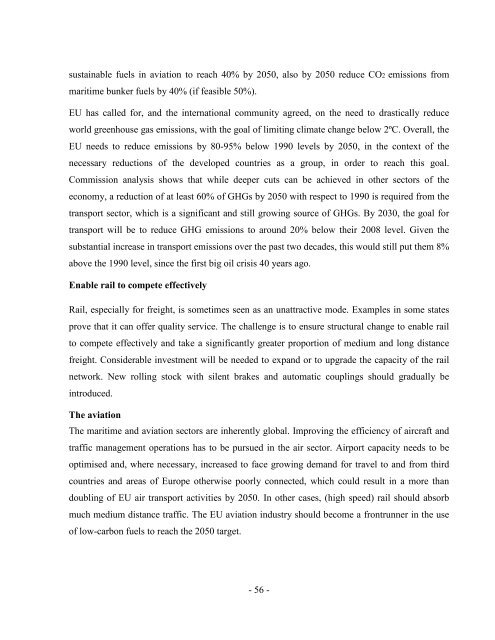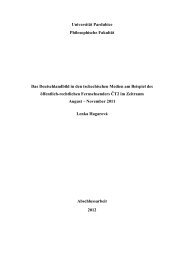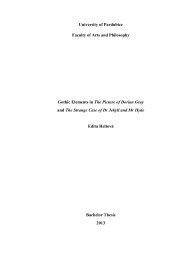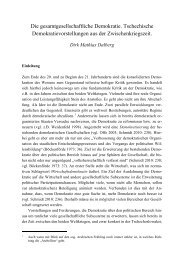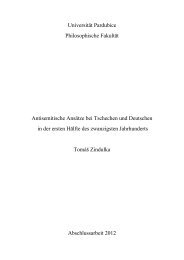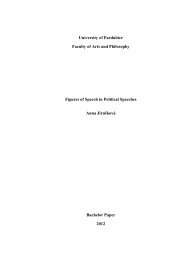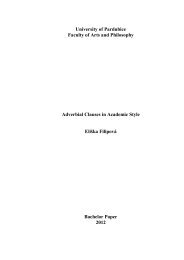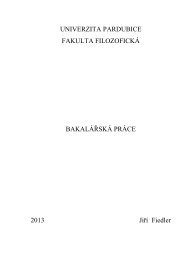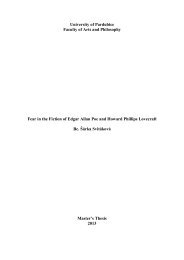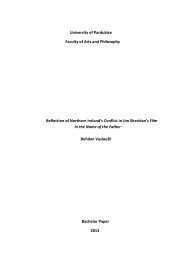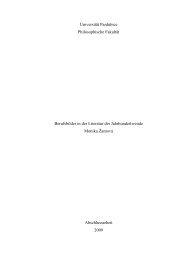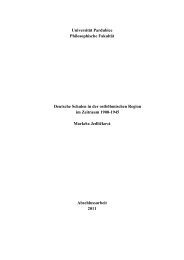University of Pardubice Jan Perner Transport Faculty Transport and ...
University of Pardubice Jan Perner Transport Faculty Transport and ...
University of Pardubice Jan Perner Transport Faculty Transport and ...
Create successful ePaper yourself
Turn your PDF publications into a flip-book with our unique Google optimized e-Paper software.
sustainable fuels in aviation to reach 40% by 2050, also by 2050 reduce CO2 emissions from<br />
maritime bunker fuels by 40% (if feasible 50%).<br />
EU has called for, <strong>and</strong> the international community agreed, on the need to drastically reduce<br />
world greenhouse gas emissions, with the goal <strong>of</strong> limiting climate change below 2ºC. Overall, the<br />
EU needs to reduce emissions by 80-95% below 1990 levels by 2050, in the context <strong>of</strong> the<br />
necessary reductions <strong>of</strong> the developed countries as a group, in order to reach this goal.<br />
Commission analysis shows that while deeper cuts can be achieved in other sectors <strong>of</strong> the<br />
economy, a reduction <strong>of</strong> at least 60% <strong>of</strong> GHGs by 2050 with respect to 1990 is required from the<br />
transport sector, which is a significant <strong>and</strong> still growing source <strong>of</strong> GHGs. By 2030, the goal for<br />
transport will be to reduce GHG emissions to around 20% below their 2008 level. Given the<br />
substantial increase in transport emissions over the past two decades, this would still put them 8%<br />
above the 1990 level, since the first big oil crisis 40 years ago.<br />
Enable rail to compete effectively<br />
Rail, especially for freight, is sometimes seen as an unattractive mode. Examples in some states<br />
prove that it can <strong>of</strong>fer quality service. The challenge is to ensure structural change to enable rail<br />
to compete effectively <strong>and</strong> take a significantly greater proportion <strong>of</strong> medium <strong>and</strong> long distance<br />
freight. Considerable investment will be needed to exp<strong>and</strong> or to upgrade the capacity <strong>of</strong> the rail<br />
network. New rolling stock with silent brakes <strong>and</strong> automatic couplings should gradually be<br />
introduced.<br />
The aviation<br />
The maritime <strong>and</strong> aviation sectors are inherently global. Improving the efficiency <strong>of</strong> aircraft <strong>and</strong><br />
traffic management operations has to be pursued in the air sector. Airport capacity needs to be<br />
optimised <strong>and</strong>, where necessary, increased to face growing dem<strong>and</strong> for travel to <strong>and</strong> from third<br />
countries <strong>and</strong> areas <strong>of</strong> Europe otherwise poorly connected, which could result in a more than<br />
doubling <strong>of</strong> EU air transport activities by 2050. In other cases, (high speed) rail should absorb<br />
much medium distance traffic. The EU aviation industry should become a frontrunner in the use<br />
<strong>of</strong> low-carbon fuels to reach the 2050 target.<br />
- 56 -


